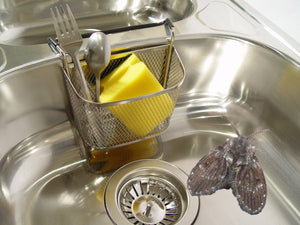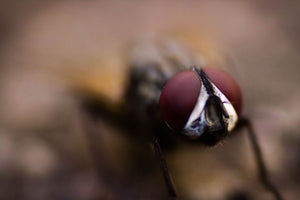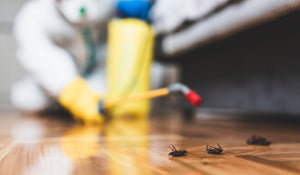
Termites are among the most common and destructive pests in United States homes. While they might look small and harmless, the annual property damage is extremely high, and many homeowners are looking for permanent solutions to kill termites.
If you have termites in your house you need to check our detailed guide. You will discover the most common signs of infestations, the best treatments, and additional tips and tricks to prevent future infestations.
So, if you are ready to get rid of termites let’s get started!

Common Signs of Termites in the House
Termites get into your home from the surrounding ground or even air, and the most challenging thing about these destructive pests is determining the infestation. Termites are silent killers of homes and will eat anything that contains cellulose and even destroy anything in search of food.
Because the infestation can quickly become severe and cost you thousands of dollars, it’s very important to notice even the slightest signs of the infestation right away.
Here are a few clues that can give away the termite location:
Some termite species such as Subterranean termites create mud tubes that connect them to the soil. The mud tubes are often found along the home’s foundation but keep in mind that a lack of mud tubes doesn’t mean you are free from termites, so keep on looking.
Capturing live specimens might not be easy, but it’s a great way to confirm the infestation and even determine what type of termites you are dealing with. For any bug removal from your home, it’s essential to recognize the problem and use the right products from the start.
If you find live termites in your backyard you might have time to protect your home from infestation.
Swarmers are termites with wings that mate and create colonies, so seeing flying insects and even discarded wings is usually not a good sign when it comes to possible infestations.
This is the time to think about termite prevention and secure your home from damage.
Where there are pests there are also droppings, so if you notice strange piles of black or brown sawdust-like matter you might be dealing with an infestation. Along with other signs from our list, this can confirm that you have termites and even help you determine where they are focused the most.
At the end of the day, termites are attacking your home because of the food abundance or in this case wood and other cellulose-rich items. People most often notice holes, damaged wood, and warping in wood flooring, windows, doors, and baseboards.

So, take your flashlight, a sharp object such as a screwdriver, and start with a detailed investigation and tapping of suspicious areas in your home. If you notice any of the mentioned signs that you have an infestation make sure to call pest control or try one of the termite treatments listed below.
What Are the Different Types of Termites?
The resilient and resourceful termites thrive all around the world, and there are over 3,000 known species so far. But in the United States, there are a few termite species that are most common and cause the most damage to properties.
Subterranean termites
One of the most spread and common termites you might encounter is the infamous subterranean termites. Because they need the moisture from the soil to survive they build the mud tunnels connected to the infested area.
Subterranean termites might be one of the most difficult to get rid of because of complex colony structures and the ability to hide in various places inside and outside your home.
Dampwood termites
The huge damp wood termites are the largest of all the common termite species in the U.S. People often confuse them with flying ants, but they are far more destructive and will cause extensive damage to your property.
Drywood termites
The mid-sized dry wood termites are probably the most resilient among all pest species. They build elaborate tunnels deep in the wood structure and don’t need moisture from the soil, making them not only difficult to detect but also very hard to get rid of.

How to Get Rid of Termites?
Depending on the type of termite that is infesting your home and the tools you have in hand, you can choose one of the mentioned ways to kill termites. If you want to be fast and efficient use multiple ways for termite control or rely on a termite exterminator in severe infestation cases.
Here are the best treatments to get rid of termites:
Diatomaceous Earth Powder
To begin your battle with persistent pests you should consider the Diatomaceous earth as the natural and non-toxic approach. The DE powder will dehydrate and kill many pests including roaches, silverfish, and termites.
You need to apply the DE powder with the specialized long-nozzle duster to get into all the cracks and crevices and add it to the outside of your home and soil for the best results.
Keep in mind that DE powder needs to be applied regularly to be effective and it’s best to combine it with additional wood termite treatments.
Boric Acid
Another bug killer in powder or paste form is the cheap and effective boric acid or borax.
This strong chemical kills a lot of pests in your home, but you need to be careful if you have children or pets, as it is very dangerous if ingested.
Bait
Termite baits are one of the most effective and economical solutions to lure, kill and manage the termites in your garden and home. Termite baits are stake-like traps that lure in the termites looking for food, and since they are slow acting the termites will be able to carry the poisonous bait back to the colony and kill many termites there.
The baits are best used in conjunction with other termite treatments and are one of the most effective monitoring and prevention tools you can find on the market.
Direct Treatment
With effective and strong direct treatment, you can deal with the termites that are inside or outside your home for a long time. Just follow the instructions carefully and be aware that these are strong chemicals that will completely eradicate termites, and best of all you can do everything on your own.

Termite Barrier Treatments
The most popular form of termite control is liquid barrier treatment. Termidor and Taurus SC termiticides are effective for long-term residual management.
To begin, dig a shallow trench around the entire house. Then, according to the label guidelines, combine at the appropriate dilution rate. Fill the channel and allow it to sit according to the label guidelines before covering it.
The barrier treatments will kill all the termites that try to get to your home and offer long-term protection against these damaging pests.
Beneficial Nematodes
Nematodes are microscopic, segmented roundworms and natural enemies of many pests including termites. These tiny worms enter the body of the termite and release bacteria that kills the host within days, and then they move on to the next host.
The Nematodes might be an unusual solution for many, but they are efficient and fast, and they are completely harmless to humans. So, if you are looking for a natural solution this might be the best one out there.
Pest Control
Termites are very resilient and easily spread through your home and property, so if you are not sure about the DIY solutions or you simply want to rely on professionals you should consider contacting the pest control in your area.
While their team might use some of the products we mentioned in the list, they have the experience and knowledge needed to handle critical situations faster.
Preventing Future Termite Infestations
Termite prevention treatment might be the best decision you make while building or renovating your home. With a few extra steps, you can cut down on termite removal costs and protect your home from damage for decades to come.
Even if you just managed to kill bugs and your home is now free from termites there are a few things you can do to prevent that from happening again.
If you live in an area where termites are common it’s a good idea to be smart about it, and clear the clutter from your garden. Removing wood, mulch, and other hiding places, as well as moisture control, can help a lot.
Consider hiring specialized teams that easily spot and detect any termite activity in your home and garden. Regular inspections can save you money in the long run.
Most termites depend on moisture, and many enter your home through gaps and cracks in the walls and construction. So, if you want to make sure termites are not welcome in your home you should make it less desirable with specialized repellants and home repairs that prevent them from coming in.
If you can consider adding additional levels of protection before you build your home. Treat the wood and timber with specialized solutions, add stainless steel foundation barriers and even consider termite shielding.

So, Can You Get Rid of Termites?
Yes, it’s possible to end termite infestation even if it’s severe.
With the right tools, methods, and professional help you can detect and kill termites, and save your home from destruction. But, even more importantly, you can work on permanent solutions and preventative treatments that will make your home impenetrable.






